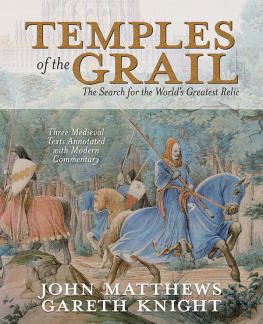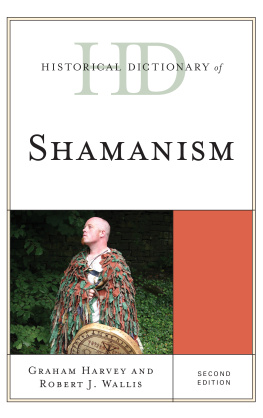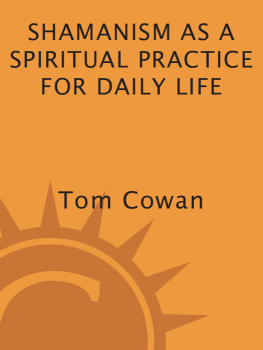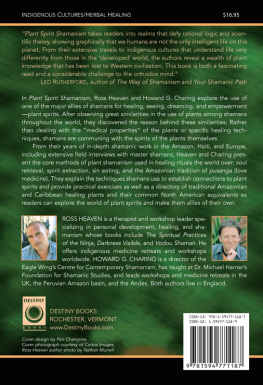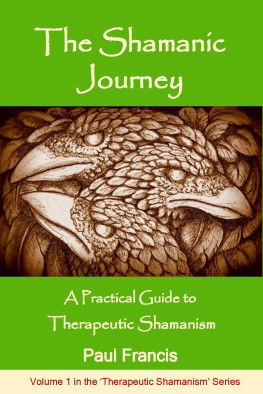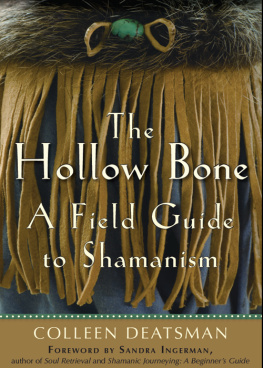The word shaman comes from the Tungusc language of Siberia and its etymology is debated. Some say it means to be consumed with fire [of inspiration]; others suggest that it means he or she who knows. Throughout this book the term shamanism is used generically to apply to all kinds of spiritual transaction, and the non-genderal word shaman to all who practise this discipline, though they have specific titles, names and roles in different cultures.

A Tuvan shaman awaits the summer sunrise, Tuva Republic, Northwest Asia.
THE STORY OF SHAMANISM
Wherever we look across the world we find traces of the ancient tradition called shamanism. Its history is deeply linked to our response as human beings to the world around us, and to the spiritual dimension of that world.
S hamanism is the oldest known spiritual discipline in the world. Its outward symbols have been discovered in Australia, the Americas, Africa, the Far East, Siberia and much of Europe, dating back to the dawn of history. Rock paintings, ancient carved stones, painted shells and antique personal adornments, originating from sites as far apart as Scotland, France, South and North America, the Arctic Circle and the Australian Bush, give us glimpses into the life and practice of the shaman.
LIVING TRADITION
In many parts of the world these ancient disciplines are still practised and taught and, through the living carriers of this tradition, we have learned to add dimension to the artefacts. The world thus revealed, for all its constant overlapping with the realms of the spirit, is at times an overwhelmingly substantial one, possessing a universality that enables modern shamans to talk essentially the same language irrespective of background or race, and to practise shamanism in ways that refer back to the distant past and forward towards the future.

A Sangoma or healer from KwaZulu-Natal, South Africa. Sangomas practise healing through divination.
Because it is not a religion as such, but rather a spiritual practice, shamanism cuts across all faiths and creeds, reaching the bedrock of ancestral memory. As a primal belief system that precedes religion, it has its own universal symbolism and cosmology, inhabited by beings, gods and spiritual allies that show manifestly similar characteristics though they appear in localized forms depending on their place of origin.
WHAT IS SHAMANISM?
Definitions of shamanism vary from culture to culture and from tradition to tradition, but most agree on common principles such as soul flight (the journey out of the body into different states of being) and the ability to heal sickness in collaboration with spiritual allies. Anthropology terms shamanism animistic that is, founded on the belief that all things have spirit but practical shamanism is much more: it is a servant of all spiritual traditions, able to draw upon the deep primordial life of the universe, preceding all of our received religions as wisdom inherited by all. It is a transcendent system that puts the practitioner in touch with every level of creation, both inside and outside what is generally accepted as reality. Above all, it is supremely practical and requires a pragmatic, down-to-earth respect for truth, nature and knowledge the three candles that no darkness can extinguish.
WHO IS THE SHAMAN?
The shaman has many roles, but not every individual possesses a full range of shamanic skills and individual shamans often specialize in various aspects of spiritual work. The shaman can be a spirit doctor, healer, diviner, seer, prophet, negotiator, ancestral intermediary and ritualist, among other roles. Shamanism itself is the practice of bringing healing, wholeness and harmony to body, mind and soul. Where ancestral laws or environmental boundaries have been violated, the shaman will seek to re-harmonize the relations between people and land, or with tribal ancestors. Where an individual falls into soul sickness, the shaman will journey to that persons spiritual guardians and allies, who can take away illness and restore wholeness. When sickness comes to domestic beasts, the shaman may commune with the spirits to find healing and renewal.


